I recently played a correspondence game, where the final part was quite interesting. It was “Marshall attack” thematic game, where I played White, successfully defended in the middlegame and went into N vs. B endgame with a spare pawn.
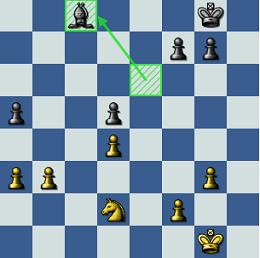
You can use books in these games, so I looked at Averbakh’s “Chess endings” – “Bishop vs. Knight”. What he says about the situation like mine is that you should maximally improve the position of your pieces and pawns. You shouldn’t hurry to create, especially to advance, a passed pawn. The most important is weakening of your opponent’s pawn configuration to create points of entry for your king penetrating into enemy’s terrytory and creating another passed pawn.
34. f3 f6 35. Kf2 Kf7 36. Ke3 g5 37. Nb1 – knight is going to c3.
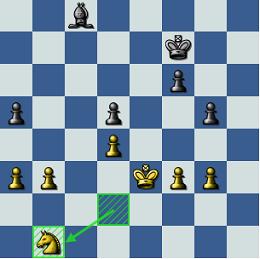
37. … Ke6 38. Nc3 Kd6 39. Nb5+ Kd7 40. Nc3 Kd6 41. f4
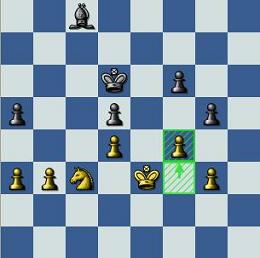
Crafty wants to play b4 right away, I do it on the next move – 41. … g4 42. b4 axb4 43. axb4 f5? – the idea is to lock the game, it doesn’t work. Crafty’s estimate drops from 1.95 to 2.50, it wants to play Bf5. I didn’t like g4 either, it makes the bishop really “bad”.

44. Kd2 Be6 45. Kc2 Kc6 46. Kb3 Kb6 47. Ka4
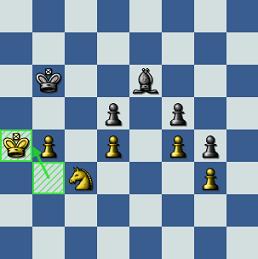
47. … Bf7 48. b5 Bg8 49. Kb4 – with the threat Na4+
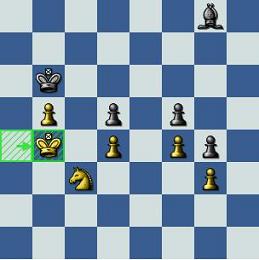
49. … Kc7 – loses right away, but there is no survival – 49. … Be6 50. Na4+ Ka7 51. b6+ Kb8 52. Nc5 Bf7 53. Kb5 Be8+ 54. Ka6 Bc6 55. b7 Bxb7+ 56. Nxb7
50. Kc5 – 1:0.





